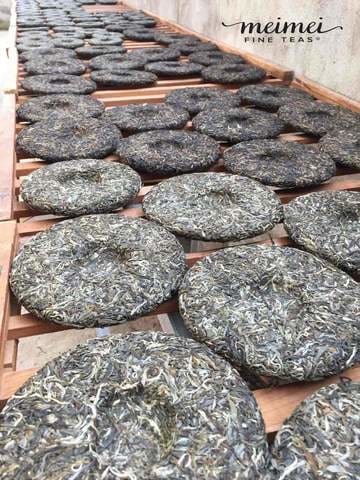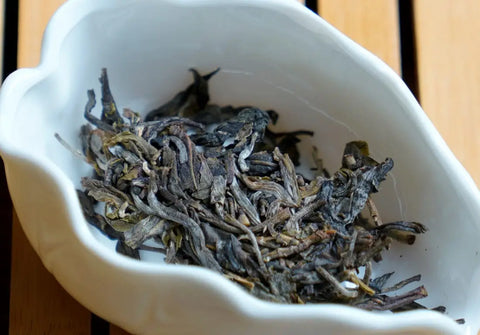
What Is Pu'Erh Tea and What Does It Taste Like?
Turning to pu erh for the first time can be overwhelming, confusing, and even intimidating. What is it supposed to taste like? What are you supposed to do with the block of tea in front of you? How do you store it? Do you prepare it like any other tea?

Addressing all of these questions would take up quite a bit of space, but we can at least walk you through some basics in today’s post, hopefully making it just a little bit easier to give this amazing and unique form of tea a chance.
As you may know, pu erh tea is a fermented tea that hails from Yunnan Province. With the exception of intentionally aged teas that have been carefully stored, many other teas begin to mellow out, lose flavor, or even taste stale over time. Pu erh, however, is a special kind of tea that gets better as it ages—so good, in fact, that its desirability and value increases with time.
But age alone isn’t a sign of quality. There are many pu erhs that can taste moldy, earthy, or fungal, and too many tea drinkers having spent money on these teas try to convince themselves that this is the way pu erh is “supposed” to taste. This couldn’t be further from the truth.
Your pu erh should never taste moldy. Trust your gut instincts. If it doesn’t seem right at first sip, then it probably isn’t.

On the contrary, when fermented properly, pu erh has a wide range of tasting possibilities with flavor profiles ranging from dates and figs to honey and caramel! The flavors can change so much from pu erh to pu erh that it can almost seem like pu erh tea itself is its own kind of beverage with a handful of subcategories waiting to be defined.
While more work can probably be done to classify pu erh teas into more specific types based on their flavor profiles, there are two broad categories that are already well-established: sheng and shou. (You can read a little more about each here). We also know that each of the four major growing regions (Jingmai, Menghai, Mengku, and Yiwu) have their own little nuances.
Between location and type—as well as an artisan’s unique touch, the climate in any given year, and storage—there is a lot of variety to discover within the world of pu erh. This is why tea connoisseurs and food experts tend to compare pu erh to wine. Both share a depth and breadth of aromatics and flavors that are unlike anything else you’ll taste. It should come as no surprise then that, also like wine, the prices can vary wildly.
Next week, we’ll discuss how you’re supposed to make a pu erh, in what ways its similar to and different from preparing other teas.
